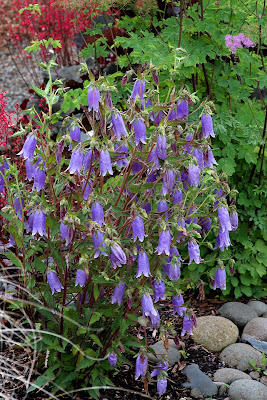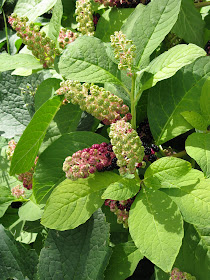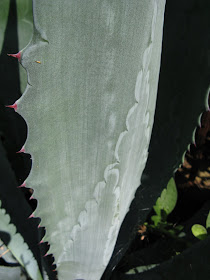From AB Cultivars in Holland comes this new Astilbe 'Delft Lace' with thick, blue-green foliage covered with a silver overlay, and red stems carrying dark pink buds that open to soft pink flowers. From "unknown parentage", it is often presented as a much-improved version of the older variety 'Peach Blossom'.

Remember that Astilbes, relatively speaking, require more water, especially early in the season when the flowers are forming and opening. Even after flowering, the foliage can quickly turn brown and crispy without some attention. They are not particularly drought-tolerant. Depending on the genetics, that is for example, whether 'Delft Lace' contains any A. chinensis (a somewhat more drought tolerant species) in its parentage, this concern will be more or less the case.
Dicentra 'Burning Hearts' is a fascinating continuation of the breeding work of Akira Shiozaki from Japan (crossing various forms of D. peregrina and D. eximea). This newest Bleedingheart has deep, hot-red flowers over top of silvery-blue, fern-like foliage. Other introductions from Mr. Shizoki are the popular 'Candy Hearts' and 'Ivory Hearts'. All of these varieties are vigorous and long-blooming. Graham Rice presents more information here.

Finally for this post is the new Shasta Daisy, Leucanthemum 'Banana Cream', with lemon-yellow flowers that retain their colour longer than other yellow-flowered varieties, e.g. 'Sonnenschein' (Sunshine). The flowers of 'Banana Cream' open a bright lemon-yellow, turning to a buttery yellow, and then to a creamy-white as they mature. It is a relatively compact variety, growing to 45cm (18") in height, and also makes an excellent cutflower.

One more set to come...
MPD, the coolplantsguy
Thanks to Planthaven, Skagit Gardens, Terra Nova Nurseries and Walters Gardens for use of their photography.































































